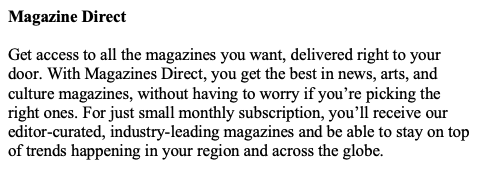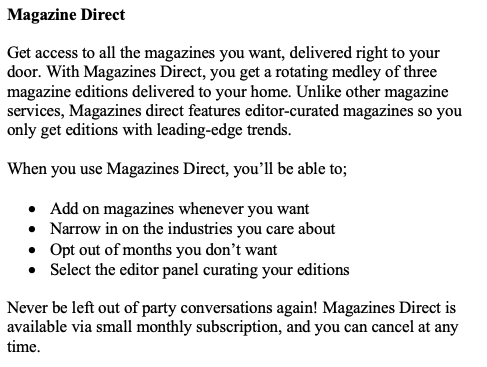If you build it, they will come. Right? Uh, no, it doesn’t work that way.
If you build it correctly, with the right set of features and benefits, then they will likely come. That doesn’t sound nearly as good…but it is far closer to reality.
Being thoughtful about how you develop products and services means that when you launch, you’ll actually have something people want to buy.
Product concept testing makes this a reality. As a research process that gathers consumer feedback throughout the development cycle, you get actionable data to launch products the market will love.
Why A Product Concept Test is Worthwhile
Good market research should help you mitigate risks. A product concept test does just that! In fact, there are two core reasons why concept testing is a smart move before launching a new product or service:
- Save time, resources, and money: Taking a product to market takes time, and it’s expensive. This includes not just the time and money spent developing the actual product but also the resources spent on sales and marketing. When you spend upfront time to develop the right product, you end up efficiently using product and marketing resources down the line.
- Make the right opportunity trade-off: When you spend time bringing one product to market you implicitly are not spending time on another product. In resource-limited environments, this is a natural trade-off we have to make. By performing concept testing upfront, you can be confident that you’re making the right trade-off.
What Does A Product Concept Look Like
Concept tests occur early in the product development process. This means you don’t have a flushed out product to hand out. Nor should you! After all, this is about giving you the insights you need to get to that point. As a result, concept ideas at this stage tend to take one of two approaches:
Concept Approach #1: Short & Sweet
Ideal for extremely early stages, short and sweet concepts mean text-only ideas s comprised of 2-3 sentences. This includes a basic description of what the product is, its benefits, and potentially a cost or other barrier to purchase. This captures first impressions and lets you see what isn’t or isn’t working. Essentially, it lets you pick the wheat from the chaff from the get-go.
Here’s a fake example of a short and sweet concept:
Concept Approach #2: Long & Detailed
Better for later concept refinement, the longer and detailed concept goes into further length. With this approach, you outline several key product features. You also map out who the product is for. The approach’s goal is gathering deeper insights about specific features and benefits for further refinement.
Here’s a fake example of a long and detailed concept:
So we’re clear, concepts can include images. As an example, this includes packaging images, product images, or screenshots of a product UI. However, you likely won’t make an effort to develop images until you have some initial validation.
How To Perform A Product Concept Test With Customers
Once you have an idea for what product ideas may resonate with customers, you next need to test them. There are generally two approaches you can take, qualitative testing done via interviews or focus groups, or quantitative testing done via surveys.
1. Qualitative Concept Tests
How It Works: Using a qualitative approach to concept testing often means affixing a concept test to the tail end of a focus group or 1:1 interview. In this approach, you share a single concept with a group or interviewee, and then ask them a series of questions about who likes the idea and why, who doesn’t like the idea and why, and if it triggers and questions or concerns.
The reading and evaluation process is repeated across each concept you want to share. At the end of the process, individuals are asked to pick their favorite and least favorite concepts. By asking this final question you can get a quick read on the strongest and weakest idea.
Ideal for:
- When you’ve done little-to-no testing in the past
- When you need basic direction about the right steps forward
- When you are unsure about the type of feedback you might get, or what’s driving the feedback
- When you value getting deeper, nuanced feedback over being able to get reads on larger quantities of concepts
- B2B products when it’s challenging to get large quantitative samples
2. Quantitative Concept Tests
How It Works: Using a quantitative approach to concept testing often means running an online survey and gathering responses from hundreds of respondents. In this approach, participants are shown a single concept and then usually asked a series of high-level questions about it (e.g. likelihood to purchase, likeability, believability, etc.).
This is repeated over the course of several concepts to gather the same data points for each and every concept. At the end, respondents are often asked to rank their top favorite and least favorite. Or, they may be asked to rank all of the concepts they saw from most favorite to least favorite.
Ideal for:
- When you need statistically significant data to determine the best path forward
- When you value testing more concepts over deeper, nuanced feedback
- When you need apples-to-apples comparisons and data across concepts to understand relative appeal
- B2C products or B2B products when finding respondents isn’t too difficult
Next Steps
Once you have a strong direction for the types of products you want to launch, the next steps include finalizing the product itself and then determining how you will go about launching it.
Product Refinement
While initial concept testing features some description of the product you plan to launch, there are likely a host of features you could include, a variety of benefits you could tout, and perhaps different price points you could consider. You’ll want to launch with the optimum mix of these components which is why many product managers complete their product development cycle with something called a conjoint or trade-off analysis. This type of research allows you to understand just how much consumers value certain features over others so you can put together a product they’ll love.
Go-To-Market Planning
Once you know exactly what your product will be, you’ll need to develop a plan for getting it to market and into customers’ hands. This is where go-to-market planning comes in. By developing a structured approach outlining your customer focus, product criteria, messaging and value propositions, marketing tactics, and resource and budgetary needs, you’ll be ready to start sharing your product with customers and start getting them to buy.







